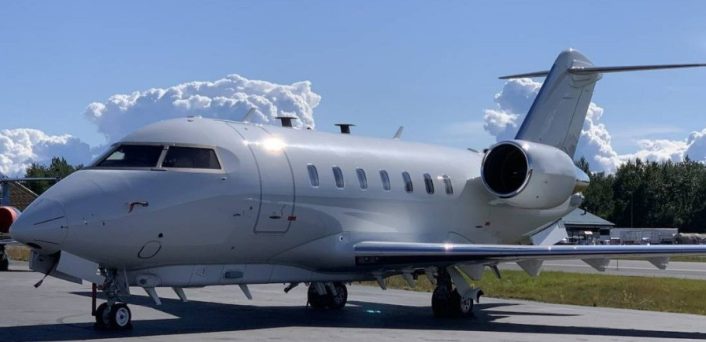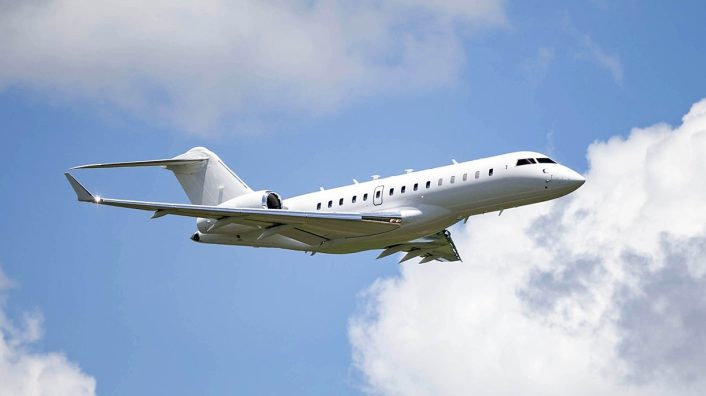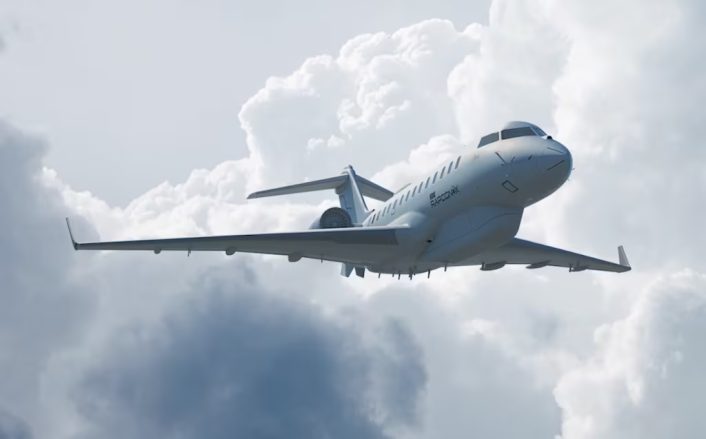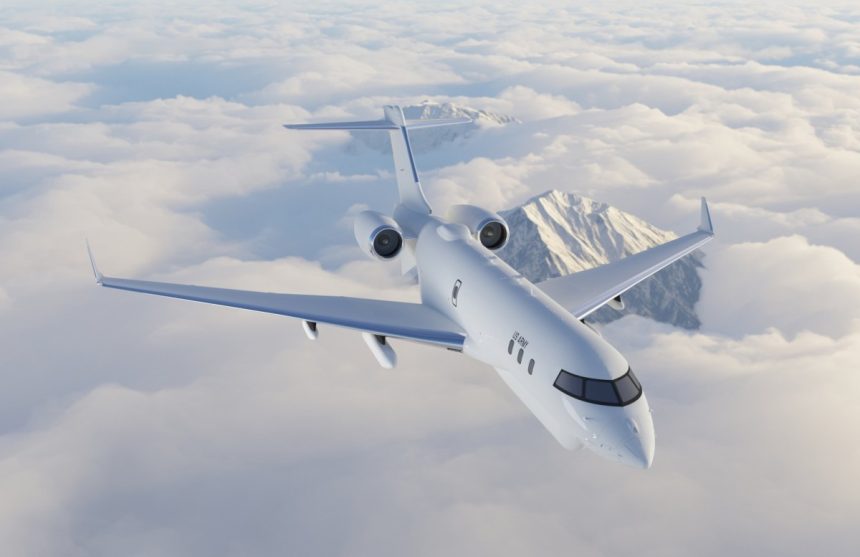SNC will integrate deep sensing technologies on the Bombardier Global 6500 business jet, converting it to perform ISR missions as the U.S. Army is looking to replace turboprop ISR fleet with HADES.
The U.S. Army has awarded Sierra Nevada Corporation the contract as lead system integrator for the High Accuracy Detection and Exploitation System (HADES) program. The 12-year indefinite-delivery, indefinite-quantity contract, worth initially $93.5 million but potentially up to $994.3 million, is a major step in the service’s plans to modernize its fixed-wing manned ISR (Intelligence, Surveillance and Reconnaissance) fleet.
SNC will incorporate deep sensing technologies on the Bombardier Global 6500 business jet as part of the transformation into an ISR platform which will provide the Army with an aircraft able to perform its mission at higher altitudes and speed, longer ranges and durations and with a greater payload.
“HADES is the centerpiece of the Army’s long-promised aerial ISR transformation strategy,” Lt. Gen. Anthony Hale, U.S. Army’s Deputy Chief of Staff for G-2 (intelligence), said in a press release. “HADES allows the Army to fly higher, faster and farther, which directly impacts our ability to see and sense deeper, delivering an organic capability in line with the Secretary of the Army’s number-one operational imperative – deep sensing.”
The Army awarded in December 2023 a contract to Bombardier for the first Global 6500 which will become the prototype of HADES, with options for two more. The plan is to field a fleet of 14 aircraft which should replace the entire manned ISR aircraft fleet.

The HADES program
The U.S. Army has long recognized that its existing fleet of turboprop aircraft is not adequate to meet requirements for the multi-domain operations against peer and near-peer adversaries. To replace these systems, the Army decided to pursue the Multi-Domain Sensing System (MDSS) High Accuracy Detection and Exploitation System (HADES) program.
The Army began shaping the HADES program in 2020 to replace the legacy turboprop aircraft fleet currently comprised of the RC-12X Guardrail, MC-12S Enhanced Medium Altitude Reconnaissance and Surveillance System, and EO-5C Airborne Reconnaissance Low aircraft, which have been in service for more than four decades. HADES prototypes will be the first Army-owned large-cabin business jets utilized for aerial ISR platforms.
The goal of HADES is to provide the service with a fleet of ISR aircraft with SIGINT (signal intelligence), SAR/MTI (synthetic aperture radar/moving target indicator) and additional capabilities. The aircraft is intended to rapidly gain and maintain situational understanding, freedom of maneuver, information overmatch, and decision advantage thanks to the ability to be globally deployable and operate outside the range of enemy anti-access/area denial systems.
ARTEMIS, ARES and ATHENA
In preparation for HADES, the Army demonstrated and deployed operationally ISR jets as part of the contractor-owned and operated Airborne Reconnaissance and Targeting Multi-Mission System (ARTEMIS) and Aerial Reconnaissance and Electronic Warfare System (ARES) programs. These allowed to evaluate sensors and collect data at the altitudes, speed, and ranges that HADES is expected to perform in order to help inform the program’s requirements.

ARTEMIS has been operational since 2020, with deployments both in the Indo-Pacific and Europe. The Army valued the faster deployment capability of the platform, based on the Challenger 650, and the ability to travel anywhere in the world within 24 hours, in addition to the higher performance compared to a turboprop.
“No longer will the Army require multiple bed-down locations to access regional hotspots,” said last year Lt. Col. Matt Paladino, ISR Task Force aerial chief for the Army Military Intelligence Staff. “A single aircraft with the speed and range of HADES can provide thousands of miles of reach from a single bed-down site, forward deployed.”
In 2022 the service deployed the larger ARES, based on the Global 6500, to the Indo-Pacific. In addition to a performance increase, the Army said ARES is closer to the HADES project’s long-term goals.
“ARES revolutionized the Army’s contribution to a joint fight in that theater,” Paladino said. “ARES provides the [U.S. Army Pacific Command] an organic deep sensing capability with relevant collection capability for the modern battlefield. Adding additional altitude and persistence over ARTEMIS, ARES is competing nearly every day with the nation’s most advanced adversaries.”
Additionally, the Army is pursuing the Army Theater level High Altitude Expeditionary Next Airborne ISR Radar/Signals Intelligence (ATHENA-R/S) jet platforms as a bridging strategy to meet operational requirements until HADES is fielded. In 2023 the service selected L3Harris and MAG Aerospace for ATHENA-R and SNC for ATHENA-S.
HADES prototype
The key feature of HADES is the integration of deep sensing to perform the ISR mission. The Army Field Manual (FM) 2-0: Intelligence defines deep sensing as “the employment of capabilities beyond the division coordinated firing line to collect data and information that supports targeting, situational understanding, or decision making.”
The specifics of this deep sensing capability are not known, but the service says it will drastically improve its intelligence gathering capabilities in multi-domain operations.

“The integration of HADES will allow the Army to fly higher, faster, and farther, which directly impacts our ability to see and sense deeper, delivering an organic collection capability aligned with the strategic tenants of FM 2.0,” said Andrew Evans, Director of the Army ISR Task Force. “This in turn enables the Army to provide increased collection capability to service organic collection requirements while simultaneously contributing to All-Domain awareness as a member of the Joint Force.”
SNC is already at work to convert a Global 6500 to the Rapidly Configurable To Any Mission-X (RAPCON-X) configuration at its facilities in Hagerstown, Maryland, as part of the ATHENA-S contract. According to Josh Walsh, SNC vice president of mission solutions and operations, the company plans to reuse “about 90 percent” of the ATHENA-S engineering package for HADES.
In a press release, SNC said that many of its signature design and integration capabilities, to include Artificial Intelligence and Machine Learning, are incorporated into the HADES system, empowering mission processing, exploitation and dissemination to more quickly facilitate all-domain awareness. The statement also added that the package was designed using model-based systems engineering (MBSE), significantly reducing the time required to integrate new capabilities when needed.
“SNC’s HADES solution is based upon rapid configurability so the aircraft is swiftly adaptable to specific recon missions based on tactical and operational needs,” said Walsh. “This integration will make the HADES jet rapidly deployable and provides transformational increases in speed, range, payload and endurance for Army aerial ISR collection capabilities.”
According to Evans, the first aircraft is expected to be operational around 12-18 months after the contract. He also added that the aircraft’s baseline configuration includes MTI, high-end SIGINT and other capabilities, but the service is also interested in adding hardpoints to the wings to mount additional features externally.









